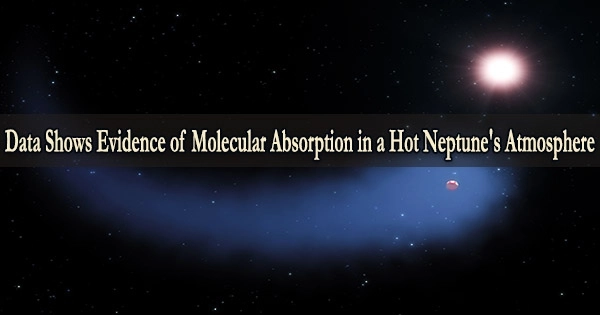A rare hot Neptune exoplanet was recently discovered by NASA’s Transiting Exoplanet Survey Satellite (TESS), and a team of international scientists just studied the spectrum of its atmosphere.
The now-retired NASA Spitzer Space Telescope, which offers a rare, infrared picture of the universe and can peer into areas of space that are obscured from optical observatories, contributed the data used in the study.
The discovery of new, tiny planets that would provide suitable targets for atmospheric characterization is one of the key objectives of NASA’s TESS project. It discovered LTT9779b early in its mission, a planet circling a Sun-like star 260 light years from Earth. This planet, which is somewhat bigger than Neptune, orbits its star quite closely. The planet is found in the “hot Neptune desert,” where planets shouldn’t exist.
In fact, the majority of nearby hot exoplanets are either small rocky exoplanets that have long since lost their atmospheres to their parent stars or gas giants the size of Jupiter or Saturn that have sufficient mass to employ their strong gravity to maintain the majority of their atmosphere.
“This ultra-hot Neptune is a ‘medium-sized’ exoplanet that orbits very close to its star (it takes just 19 hours to complete an orbit), but its low density indicates that it still has an atmosphere weighing at least 10 percent of the planet’s mass,” explained University of New Mexico Physics and Astronomy Assistant Professor Diana Dragomir, who is leading the work which involved more than 25 institutions.
Hot Neptunes are rare, and one in such an extreme environment as this one is difficult to explain because its mass isn’t large enough to hold on to an atmosphere for very long. So how did it manage? LTT9779b had us scratching our heads, but the fact that it has an atmosphere gives us a rare way to investigate this type of planet, so we decided to probe it with another telescope.
Diana Dragomir
The age of this system is 2 billion years. At this high temperature, the planet’s atmosphere should have evaporated long ago, early in the system’s life.
“Hot Neptunes are rare, and one in such an extreme environment as this one is difficult to explain because its mass isn’t large enough to hold on to an atmosphere for very long. So how did it manage? LTT9779b had us scratching our heads, but the fact that it has an atmosphere gives us a rare way to investigate this type of planet, so we decided to probe it with another telescope,” Dragomir added.
Scientists used secondary eclipse observations with the Spitzer Infrared Array Camera (IRAC) of the hot Neptune to better understand its atmospheric makeup and offer further information on its origin. The Spitzer observations confirmed an atmospheric presence and enabled a measurement of the planet’s very high temperature, approximately 2,000 Kelvin (about 3,000 degrees Fahrenheit).
“For the first time, we measured light coming from a planet that shouldn’t exist!” Said Dragomir.
After combining the Spitzer observations with a measurement of the secondary eclipse in the TESS bandpass, the scientists studied the resulting emission spectrum and identified evidence of molecular absorption in the planet’s atmosphere, which they believe is likely due to carbon monoxide.
Although the presence of this molecule in the atmosphere of a hot Neptune is not surprising, it may shed light on the planet’s genesis and how it was able to retain its atmosphere. With this finding, TESS has made the first-ever detection of atmospheric characteristics in an exoplanet and the first-ever observation of an ultra-hot Neptune.
“If there’s a lot of atmosphere surrounding the planet, as is the case for LTT9779b, then you can study it more easily,” said Dragomir. “A smaller atmosphere would be much harder to observe.”
The results indicate that LTT9779b is an excellent target for additional characterization with NASA’s upcoming James Webb Space Telescope (JWST), which could also verify whether the observed molecular absorption is indeed due to carbon monoxide.
A companion paper, led by assistant professor of physics at Kansas University Ian Crossfield, also discovered indications suggesting the planet’s atmosphere contains more heavy elements than is typical. It’s also interesting to note that light elements like hydrogen and helium make up the majority of the two similarly sized planets in our Solar System, Neptune and Uranus.
“LTT9779 is one of those super-exciting targets, a very rare gemstone for our understanding of hot Neptunes. We believe we detected carbon-monoxide in its atmosphere and that the permanent dayside is very hot, while very little heat is transported to the night side,” said Björn Benneke, professor at Université de Montréal and member of the Institute for Research on exoplanets (iREx). “Both findings make LTT9779b say that there is a very strong signal to be observed making the planet a very intriguing target for future detailed characterization with JWST.”
Together, these findings pave the way for similar studies of a wider sample of exoplanets found in this scorching Neptune desert, which are essential for figuring out the genesis of this particular population of exoplanets.
















